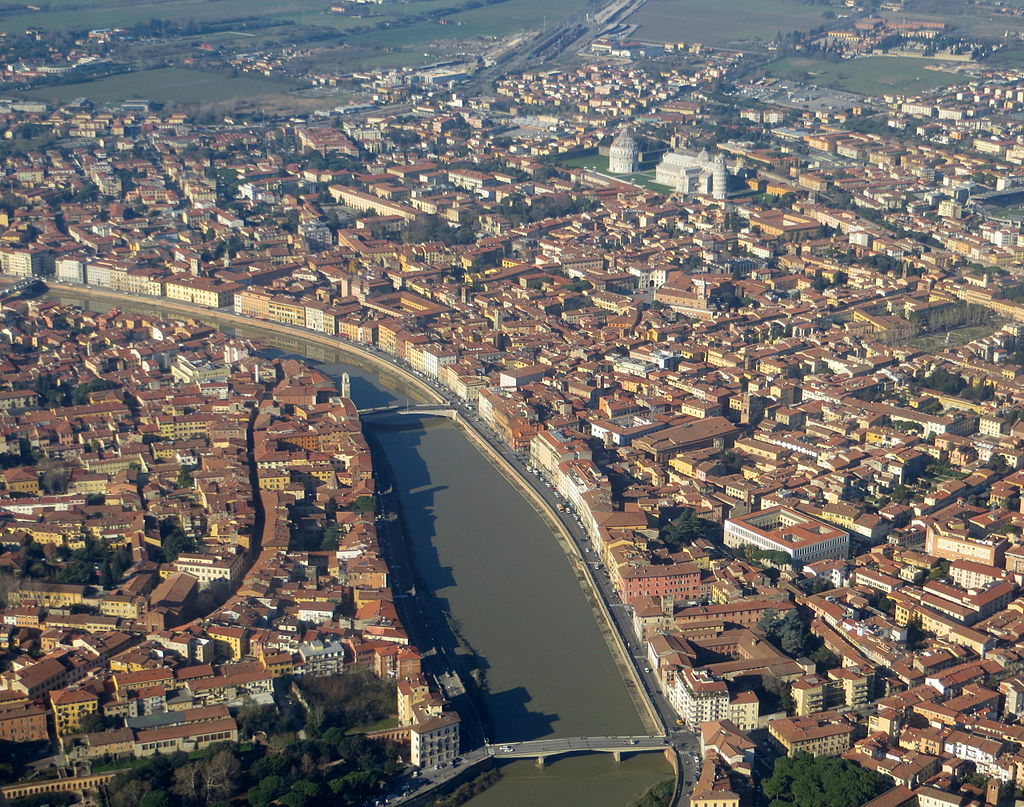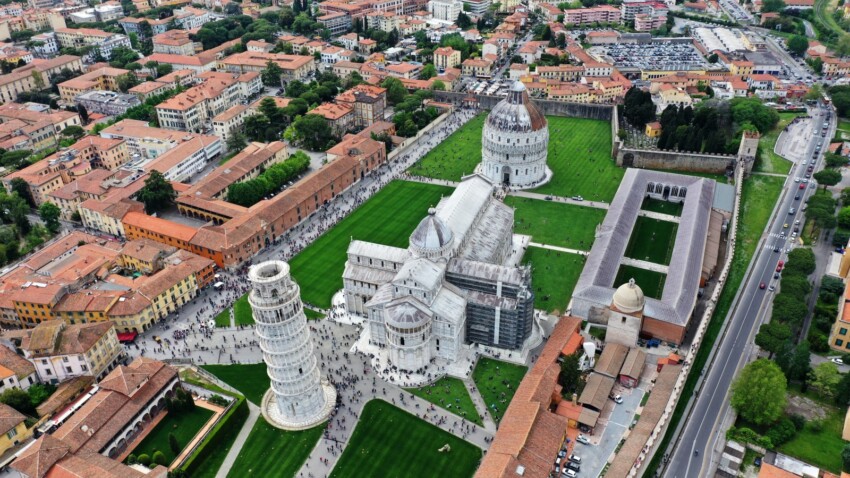



Pisa is an Italian city in Tuscany known above all for the famous leaning tower.

Already off axis when it was completed in 1372, the 56 m high white marble cylinder is none other than the bell tower of the marble Romanesque cathedral that stands nearby, in Piazza dei Miracoli. The same square is home to the monumental Camposanto and the Baptistery, where non-professional singers test themselves every day with its famous acoustics.

The symbols used by the city in the first years of its foundation are unknown, certainly a symbol to which the city is historically very linked is the Madonna, whose image is shown on many ancient coins (sometimes with baby Jesus) and to which it is also dedicated Cathedral. Weapons of the municipality Shield of the Republic of Pisa.svg Of red to the cross with a patent and ointment of twelve globes.

The eagle is another symbol of the city often reported on correspondence and coins and testifies to Pisa's loyalty to the empire.

Today the eagle on a yellow background is the symbol of the homonymous province. Also by virtue of loyalty to the Holy Roman Empire, in 1162 first and then in 1166, the emperor Frederick Barbarossa grants the imperial banner to the municipality, in fact in the deeds the wording dedicated etiam imperator eis usum vexillum (from the Latin: the emperor also gave the use of the banner).

Little is known of what banner it is, but many believe it to be the Blutfahne and it is however certain that in the following centuries the city used a red flag as a sign.
The red color is still present today in the arms of the city together with the typical patent cross, that is with the arms wider in the terminal part, retracted, that is with the ends of the arms in the shape of a rhombus, and ointment with twelve globes. However, it is little known how and when the cross was adopted as a symbol of the city.

In 1288 there is the first evidence of the use of the cross as a weapon of the People, or of the Pisan bourgeois; however, this sign and that of the city certainly remained distinct until the end of the twelfth century. On some coins after 1318 a cross appears as a mint mark and some of these crosses are leafed, a shape similar to the current one. It was during the second republic (1494-1509) that the Pisan cross became, in effect, the town's coat of arms.

It must therefore be said that many reproductions of historical objects used during the historical re-enactments of the Pisan coat of arms with the cross are a false historical as they refer to events prior to the adoption of the reproduced weapon; just as the reproduction of the flag with the cross on the Navy coat of arms is to be considered historically incorrect since it refers to the period in which Pisa was a maritime republic and which therefore still adopted the red banner.

Other less commonly used symbols are the hare and to symbolize the tenacity and strength of the Pisans, the weed.
Pisa
Address: Via Nenni 30, 56124
Phone:
Site:
http://www.comune.pisa.it/it/homeLocation inserted by
BBCC